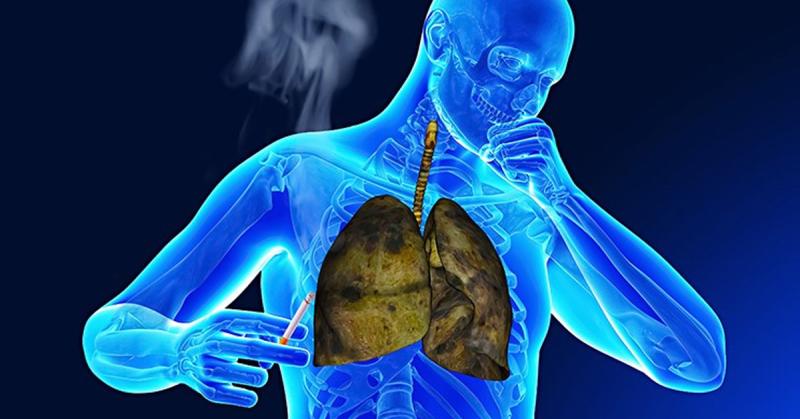What is COPD?
Chronic Obstructive Pulmonary Disease (COPD) refers to a group of lung diseases that cause airflow blockage and breathing-related problems. It includes emphysema, chronic bronchitis, and non-reversible asthma. The primary cause of COPD is long-term exposure to irritating gases or particulate matter, most often from cigarette smoke.
Lifestyle Changes to Manage COPD Symptoms
Adopting a healthy lifestyle is one of the main treatment goals for Chronic Obstructive Pulmonary Disease Treatment patients. Some beneficial lifestyle changes include quitting smoking, maintaining a healthy diet, exercising regularly, dealing with stress, avoiding pollution exposure and getting vaccinated. Quitting smoking is the best thing a smoker can do to slow down progression of the disease. Exercising regularly helps in staying physically active and improves breathing capacity. A balanced diet focuses on getting proper nutrition.
Medications to Help Relieve Symptoms
There are different medications available to help relieve COPD symptoms. Bronchodilators widen the airways to make breathing easier and come in short-acting (rescue inhalers) or long-acting form. Short-acting ones are used as needed for symptom relief and long-acting ones are taken daily to prevent symptoms. Another class is corticosteroids that help reduce airway inflammation. Combination inhalers contain both a bronchodilator and a corticosteroid. Tablets called theophylline are sometimes prescribed as a long-acting bronchodilator. Antibiotics are used during exacerbations to treat infections. Corticosteroid tablets may be prescribed during exacerbations as well. These medications help manage everyday symptoms and exacerbations.
Oxygen Therapy and Supplementation in Chronic Obstructive Pulmonary Disease Treatment
Supplemental oxygen therapy may be prescribed for COPD patients with low blood oxygen levels. This involves the use of portable oxygen concentrators or liquid oxygen tanks. It helps improve survival and overall functioning by increasing oxygen saturation to normal levels. Some other therapies to aid breathing include incentive spirometry (deep breathing exercises), airway clearance techniques like chest physiotherapy and positive expiratory pressure therapy. Essential fatty acid supplementation aims to reduce inflammation through a balanced diet or supplements. Probiotics may also help reduce exacerbation frequency by maintaining healthy lung microbiome.
Non-invasive Ventilation for Advanced Chronic Obstructive Pulmonary Disease Treatment
For those with advanced COPD, non-invasive positive pressure ventilation may be used to reduce respiratory distress and risk of hospitalization. It involves providing a constant airflow through a face or nasal mask attached to a machine. These include continuous positive airway pressure (CPAP) or bi-level positive airway pressure that provides two different pressure levels. It helps improve ventilation and oxygenation especially during flare-ups or acute respiratory distress. However, it needs training to get comfortable using the mask and machine at home for several hours per day.
Pulmonary Rehabilitation Programs for Chronic Obstructive Pulmonary Disease Treatment
Pulmonary rehabilitation programs are exercise and education-based programs proven to greatly benefit people with COPD and other chronic lung diseases. They aim to improve symptoms, quality of life and exercise tolerance through a combination of aerobic exercise training, education on disease self-management and breathing techniques. Pulmonary rehabilitation may involve a team of healthcare professionals like doctors, respiratory therapists, exercise specialists and dietitians. It can be provided in hospital outpatient programs or home-based programs under medical guidance and supervision. Participating in pulmonary rehabilitation results in fewer exacerbations and hospitalizations, better emotional health and enhanced ability to manage activities of daily living. Some centers also have maintenance programs for long-term management after completion of initial program.
Surgery and Lung Transplantation as Last Resorts
For a select few patients whose quality of life remains extremely limited even with optimal medical management, lung volume reduction surgery or lung transplantation may be considered as last options. Lung volume reduction surgery aims to surgically remove the most diseased parts of lungs to make breathing easier in the remaining parts. Lung transplantation involves replacing the diseased lungs with healthy donor lungs for those who meet eligibility criteria as their final treatment alternative. However, surgery requires careful patient selection and long-term immunosuppressive therapy is needed post-transplantation. Overall, current chronic obstructive pulmonary disease treatment focus on improving symptoms through lifestyle modifications and various pharmacological and non-pharmacological therapies.
Get More Insights on- Chronic Obstructive Pulmonary Disease Treatment
About Author:
Money Singh is a seasoned content writer with over four years of experience in the market research sector. Her expertise spans various industries, including food and beverages, biotechnology, chemical and materials, defense and aerospace, consumer goods, etc. (https://www.linkedin.com/in/money-singh-590844163)
